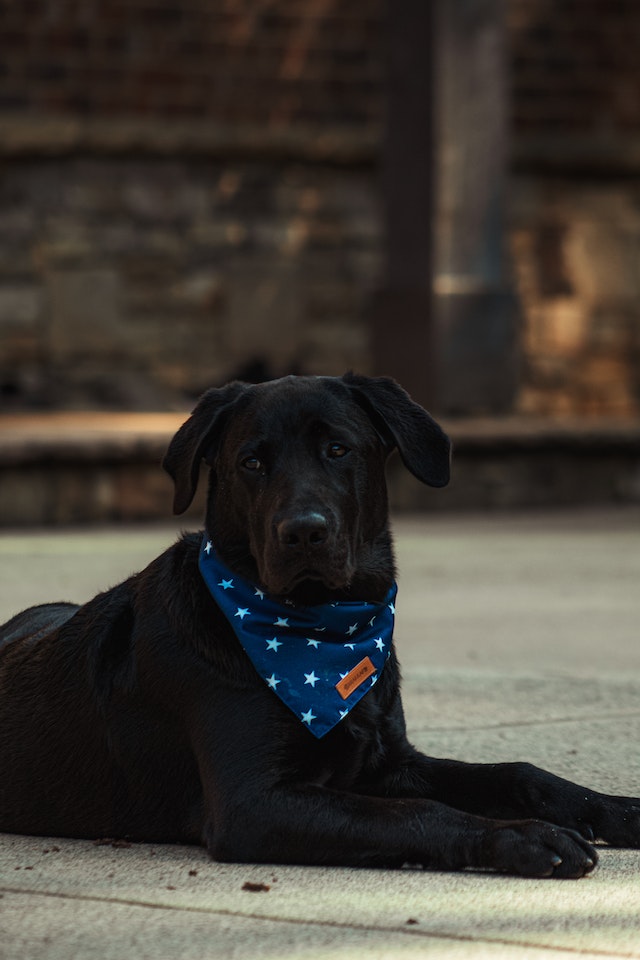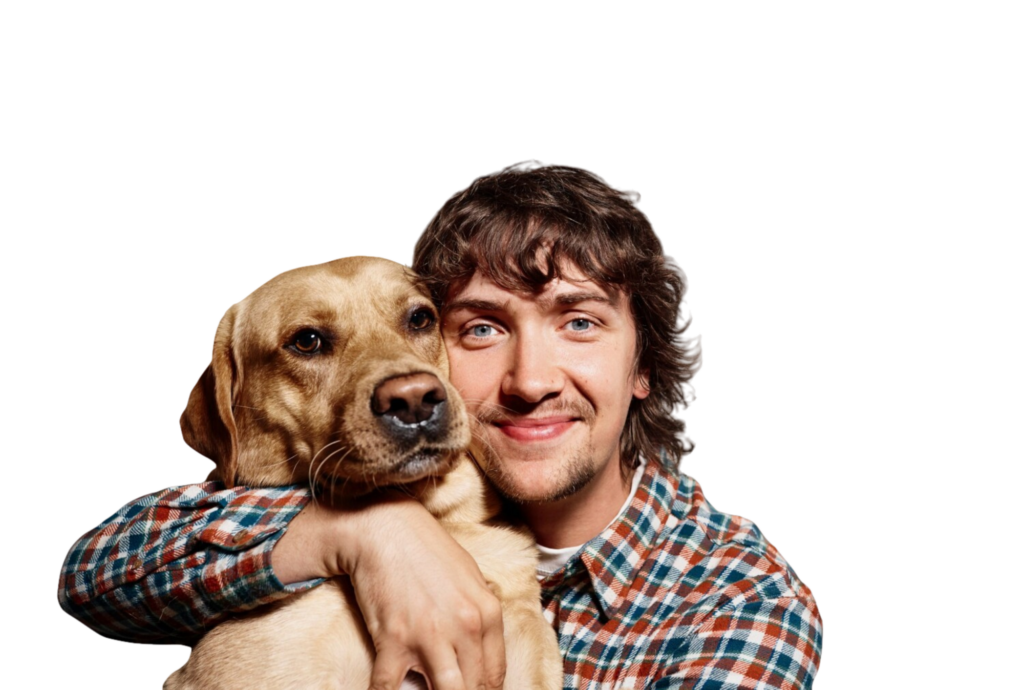Dog Anxiety and Grooming; what do you need to know?
Have you struggled with understanding dog anxiety and grooming? Finding a dog grooming service that meets you and your dog’s needs can be difficult. You’re not alone. Dog anxiety and dog grooming are closely related in several ways. For many dogs, grooming can be a stressful experience, especially if they are anxious or fearful. On the other hand, grooming can also be a great way to help reduce anxiety in dogs. In this blog, we’ll explore the relationship between dog anxiety and grooming, and offer some tips on how to make the grooming process as stress-free as possible for your furry friend.
Doggy body language
Dogs can’t talk or tell you how they feel, so it’s important to understand your dog’s behaviors and body language. By paying attention to their body language cues and behaviors, you can get a better understanding of how your dog is feeling and respond appropriately.
Observing your dog’s behavior cues at home
All dogs behave differently in different situations, so it’s crucial for you to observe your dog’s behavior in their everyday life and learn their body language cues. Here are some common signs to look for:
- Ears.
The position of a dog’s ears can be a good indicator of their mood. Ears that are perked up and forward may indicate that the dog is alert and interested, while ears that are laid back against the head may indicate fear or submission.
- Eyes.
The way a dog’s eyes look can also give clues about their mood. Wide, open eyes may indicate fear or excitement, while narrowed eyes or dilated pupils may indicate aggression.
- Mouth.
A dog’s mouth can be a good indicator of their mood. A relaxed mouth with the lips loose and the tongue hanging out may indicate a happy or content dog, while a tense mouth with the lips pulled back or the teeth bared may indicate aggression or fear.
- Tail.
The position and movement of a dog’s tail can be a good indicator of their mood. A wagging tail generally indicates happiness or excitement, while a tail that is held low or between the legs may indicate fear or submission. - Body posture.
A dog’s body posture can also give clues about their mood. A relaxed body with a loose stance may indicate a happy or relaxed dog, while a tense body with a stiff stance may indicate aggression or fear.
Common dog behaviors during grooming
It’s important to pay attention to your dog’s behavior during grooming and to let the groomer know if your dog has any specific fears or anxieties.
Here are some common behaviors that dogs may exhibit during grooming:
- Relaxed: Some dogs may be calm and relaxed during grooming, laying down or sitting still.
- Anxious: Other dogs may show signs of anxiety during grooming, such as panting, shaking, or trying to get away.
- Excited: Some dogs may become excited during grooming, wagging their tail, or jumping around.
- Playful: Some dogs may become playful during grooming, trying to play with the tools or equipment.
- Fearful: Some dogs may be fearful during grooming, showing signs of stress such as trembling or hiding.
How to know if your dog trusts their groomer
- They are relaxed and calm during grooming: A dog that is relaxed and calm during grooming is more likely to trust their groomer.
- They are happy to see their groomer: If your dog is excited to see their groomer and greets them happily, it’s a good sign that they trust them.
- They are comfortable being handled: A dog that is comfortable being handled and is not anxious or fearful during grooming is likely to trust their groomer.
- They follow commands: If your dog is willing to follow commands and obey their groomer during grooming, it’s a sign that they trust them.
- They are not aggressive: A dog that is not aggressive or reactive towards their groomer is likely to trust them.
How your dog’s behavior impacts the groomer
Grooming dogs can seem to the naked eye like a very simple, straight-forward task. However, dogs are unpredictable, and their wide range of behaviors and movements can severely impact a groomer’s mental or physical ability to perform a great-quality grooming service. Understanding how your dog behaves and communicating that to your groomer can make a world of a difference for the result of the groom.
How an anxious dog affects dog groomers
Grooming an anxious dog can be a challenging and sometimes stressful experience for the groomer. Some possible effects on the groomer could include:
- Physical fatigue: Grooming an anxious dog can be physically demanding, especially if the dog is trying to get away or is uncooperative.
- Emotional strain: Dealing with an anxious or fearful dog can be emotionally draining for the groomer, especially if the dog is distressed or in a lot of discomfort.
- Time pressure: If the groomer is working with a tight schedule, the extra time and effort required to groom an anxious dog may cause time, pressure, and stress.
- Loss of focus: The groomer may struggle to concentrate or perform their job to the best of their ability if they are worried about the dog’s anxiety or are dealing with a lot of distractions.
How an anxious dog affects the final grooming result
All dogs bring their own challenges for groomers to face. If you have a highly anxious, fearful, or aggressive dog, it can negatively impact your groomer’s ability to perform each task to completion. Many complaints are directly related to the dog’s behavior during the groom, which can be stressful for all parties involved.
Here are some common complaints, and how dog anxiety relates:
- Long wait times.
Most groomers will provide an estimate for how long each groom should take. However, there’s no way of predicting how a dog is going to behave during the groom, and that can affect the amount of time it takes to complete. If a dog is incredibly anxious, moves uncontrollably, or is even aggressive, the groomer must accommodate the dog and take extra time to allow the dog to calm down before continuing.
- Poor grooming results.
In the worst case scenario, groomers can’t complete all tasks because a dog’s behavior is too extreme. This may be a cause for complaint for the customer; however, it’s important to be empathetic to your groomer, and understand that they have their limitations too. If a groomer doesn’t feel that either they or the dog is safe, their decision will be based on that.
- Dog behaving oddly after the groom.
It’s important to give your dog some time to adjust after grooming and to provide them with a calm and safe environment. Grooming can be a confusing and disorienting experience for some dogs, especially if they are not used to it. As a result, they may act weird after grooming as they try to adjust to the changes. Grooming can also be a stressful experience for some dogs, especially if they are anxious or fearful. As a result, they may act weird after grooming as they try to cope with the stress.
- Injuries or accidents.
Dogs are unpredictable and may move uncontrollably with no warning while they’re being groomed. If a groomer is unaware of the dog’s behavior and is using sharp tools in an area of the dog that is sensitive and the dog lashes out, it could be extremely dangerous for both the groomer and the dog. It’s important to trust your groomer and understand that injuries are never intentional. - High prices.
Many pet grooming businesses may charge a “Special Handling Fee” for dogs that are extremely behavioral. Not only does it take longer for the groom to be completed, but it is a stressful experience for both the dog and the groomer, and groomers are typically not paid for their time, but for their work.

Helping With Dog Anxiety and Grooming
There’s a wide variety of methods that can be used to ease your dog’s anxiety during grooming. It’s important to experiment in any ways you can. If you consider using medication, always consult with a veterinarian first.
Prepare
- Get your dog used to the grooming process gradually. Start by brushing them or giving them a bath at home. Then, gradually work up to taking them to the groomers.
- Choose a groomer who is experienced in handling anxious dogs. A groomer who is patient and gentle can go a long way in helping your dog feel more comfortable.
- Have your dog groomed in a quiet, calm environment. A busy or loud environment may be more stressful for your dog.
If you find that your dog is still quite anxious, you can also try:
- Anti-anxiety medications: These medications can help reduce anxiety and make the grooming process less stressful for your dog.
- Sedatives: Sedatives can help relax your dog and make them more comfortable during grooming.
- Pain medications: If your dog is in pain or discomfort during grooming, pain medications can help make them more comfortable.
It’s important to consult with your veterinarian before giving your dog any medication. They will be able to recommend the best medication for your dog based on their specific needs and medical history. It’s also important to follow the dosage and administration instructions provided by your veterinarian. If you are interested in learning more about some medication options, you can refer to the Dogington Post article that discusses options.
Resolving anxiety during the groom
It’s important to understand that all dogs are different and while on technique for easing anxiety might work for one dog, it may not work for another. Have your groomer experiment with each of these techniques while they’re grooming your dog, and have them assess which methods work best.
- Use positive reinforcement. Give your groomer dog treats and have them praise your dog for calm behavior during grooming.
- Use distraction techniques. Bring your dog’s favorite toys or treats to the grooming appointment to help distract them from any anxiety they may be feeling.
- Take breaks. If your dog is becoming overwhelmed, have the groomer take a break and give them some time to relax before continuing.
- Be patient. Grooming can be a stressful experience for some dogs, so it’s important for your groomer to be patient and understanding.
Thank you for reading
We will be posting in-depth blog posts related to dog grooming, dog breeds, dog training tips, and much more. Don’t forget to tag us on Instagram or follow our FaceBook page! To learn more about dog behavior, check out our article on How to Stop Your Dog From Eating Everything.



